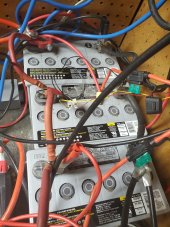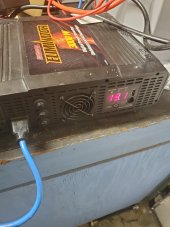fire hazard
New Member
- Joined
- Jul 14, 2021
- Messages
- 160
i dont know whats going on,2 1000w inverters fried,now using 3000w eliminator 12v,this one shuts off before damage occurs,error opp means ac short circuit,using 420w on a 3000w inverter,im at a loss,3 gell batteries in parallel 51ah,please help.12.2v switches over to mains reconnects at 14v,appliance 2 lights






